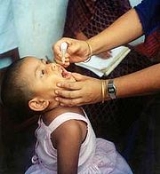
Plan Bolivar 2000
Encyclopedia
Implementation of Plan Bolivar
The Plan Bolivar 2000 was a unique idea of Chavez. He wanted it to be implemented in three stages. Pro-Pais which is stage one would involve the armed forces working in the capacity of social service. The Pro-Patria, the second stage, would mean the military helping local communities help themselves. Pro-Nacion, the third stage, would help the country to be a more self-sufficient economy that can sustain itself. Chavez’s social policies are where his contribution weights the most because of the amount of money being redirected to the people rather than to personal Swiss accounts.In an October 2002 interview, President Chávez stated that:
- "My order was: "Go house to house combing the terrain. The enemy. Who is the enemy? Hunger." And we started it on February 27, 1999, ten years after the CaracazoCaracazoThe Caracazo or sacudón is the name given to the wave of protests, riots and looting and ensuing massacre that occurred on 27 February 1989 in the Venezuelan capital Caracas and surrounding towns. The riots — the worst in Venezuelan history — resulted in a death toll of anywhere between...
, as a way of vindicating the military. I even used the contrast and I said: "Ten years ago we came out to massacre the people, now we are going to fill them with love. Go and comb the terrain, look for misery. The enemy is death. We are going to fill them with bursts of life instead of gun shots of death." And, in truth, the answer was really beautiful. While we, the politicians, were engaged in the political struggle, 40,000 soldiers were on a campaign to attend to the health of the people; opening roads with military engineering equipment; flying passengers in military planes to the most poor areas, charging them at cost."
Several scandals affected the program as allegations of corruption were formulated against Generals involved in the plan, arguing that significant amounts of money had been diverted. General Cruz Weffer was charged with corruption in 2001.
External links
- The Military and the Revolution: Harnecker interviews Chávez — Includes descriptions by Hugo Chávez of his creation and perceptions on Plan Bolívar 2000.

